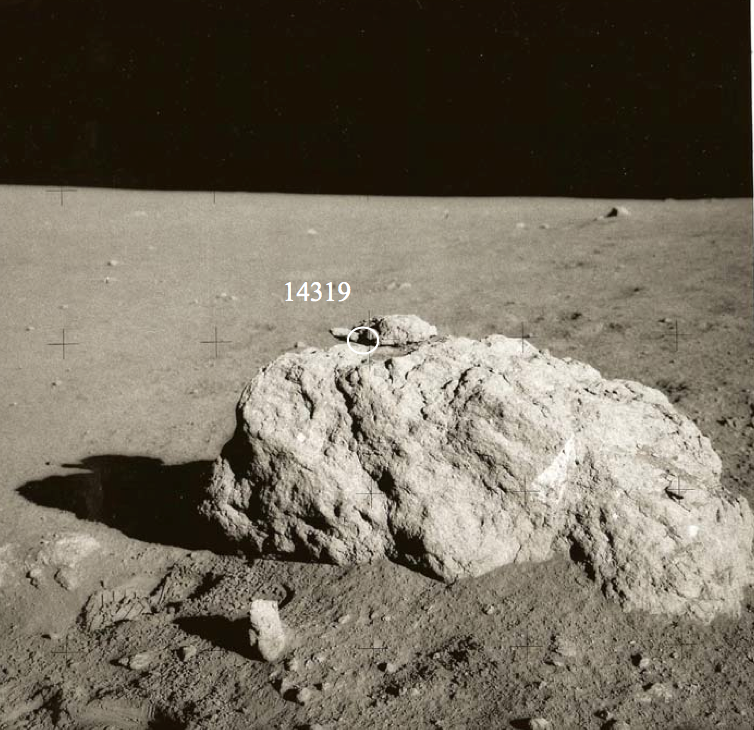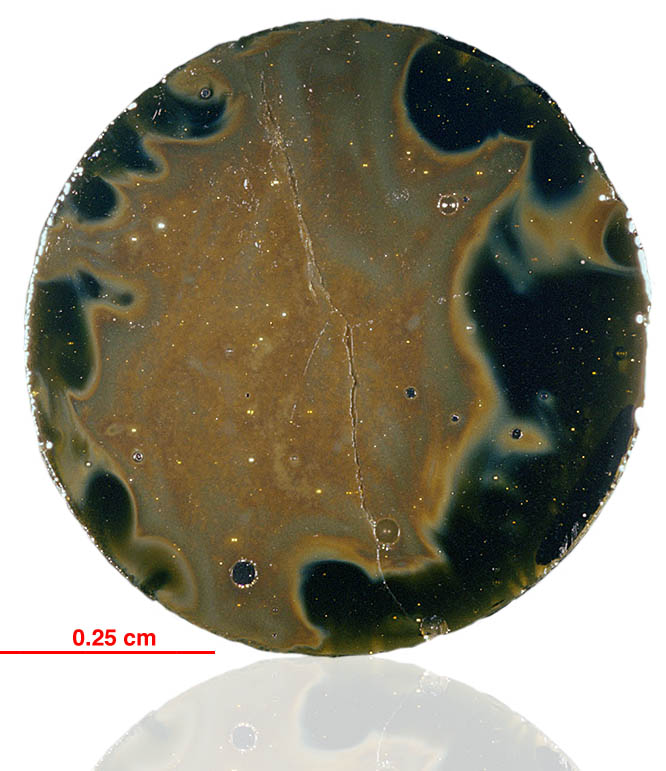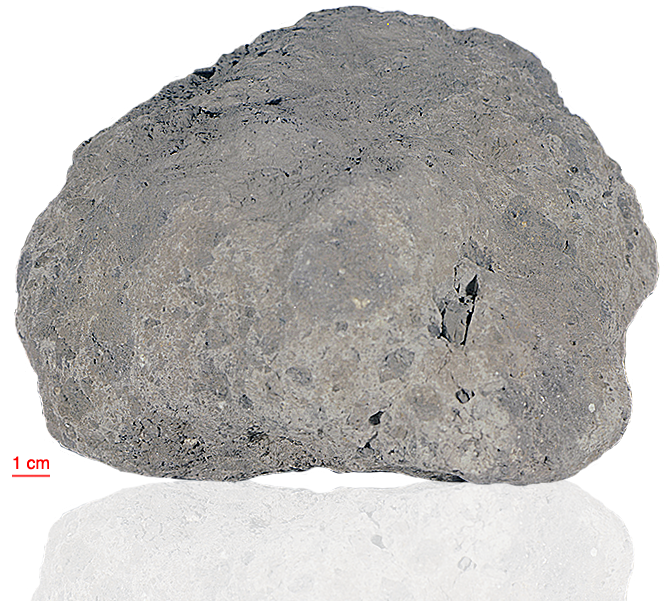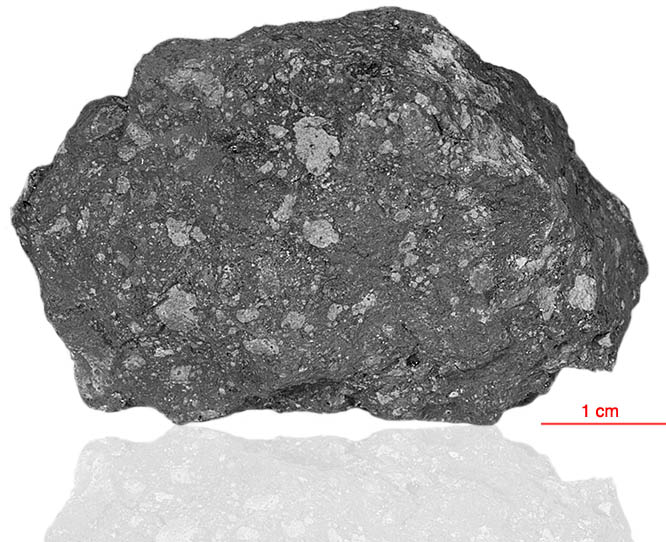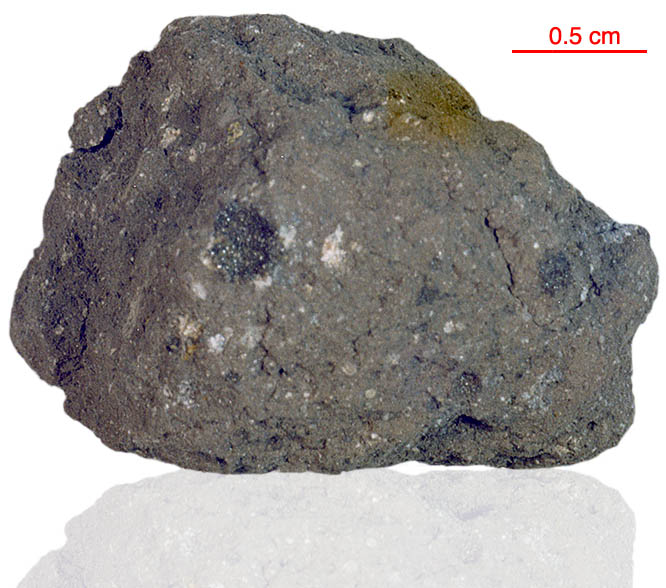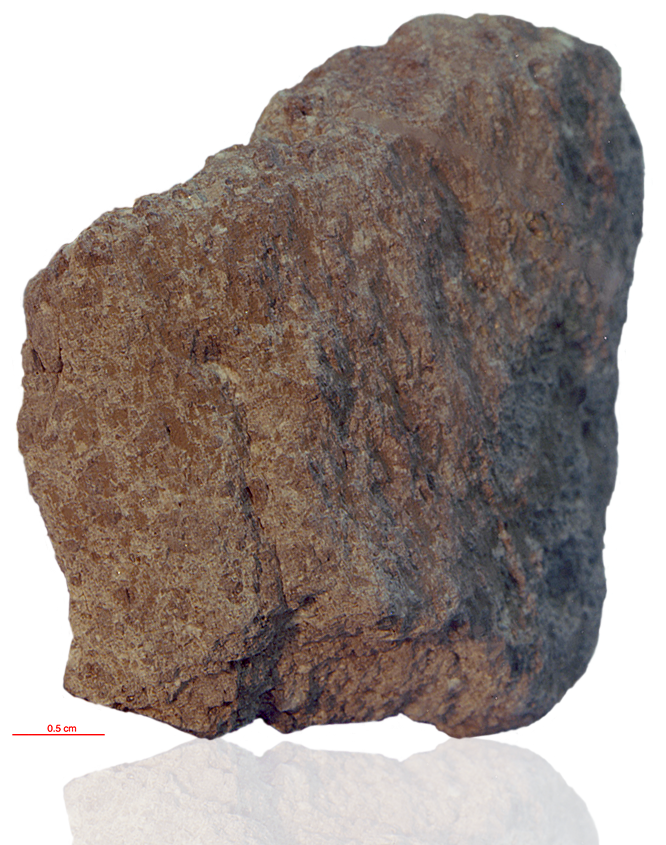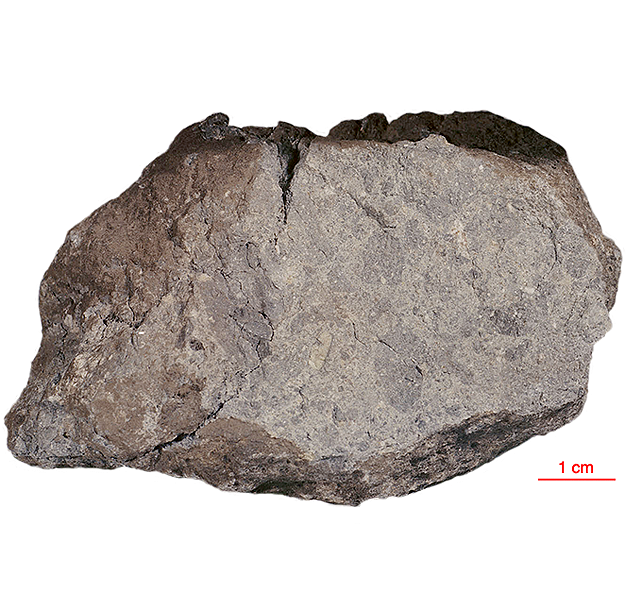
Fact sheet
14319 is a blocky, angular rock with a highly irregular surface. The rock is a coherent breccia that is broken apart along fractures. Clasts make up to 30 percent of the rock and dark clasts are by far the dominant type. Some of these have white clasts within them.
14319 weighed 211.6 grams before analysis. It has not been dated.
The mounting resin of this thin section has deteriorated over time and now contains clusters of feathery crystallites around the margins of the thin section.
Further details of this and other Apollo samples are here: http://curator.jsc.nasa.gov/lunar/
The Apollo 14 landing site was in a region formed by impact-basin debris.
Most of the 42 kilograms of rocks and soil collected on Apollo 14 are breccias (rocks that are composed of fragments of other, older rocks). In some cases, the rock fragments that form a breccia are themselves breccias. Such rocks obviously have experienced complex histories with multiple generations of impact events. Some breccias were heated enough that some of the material in the rock was melted.
Apollo 14 was launched on 31 January 1971.
